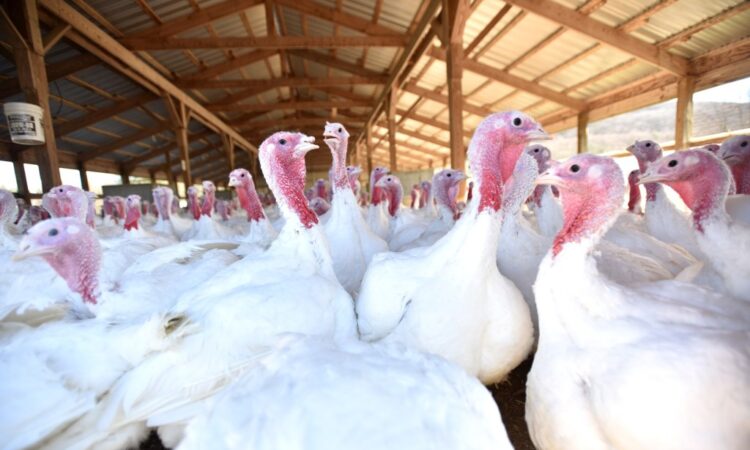
With Gov. Josh Shapiro highlighting his administration’s efforts to support Pennsylvania’s farmers, growers and producers, several local farm officials weighed in on the current state funding landscape.
The agriculture sector contributes $132 billion annually to Pennsylvania’s economy, supporting more than 600,000 jobs, state officials said.
Under Shapiro, Pennsylvania — home to more than 50,000 farms — created the first statewide Economic Development Strategy in nearly two decades with agriculture at the forefront; fully funded the PA Farm Bill at $13.8 million annually, supporting workforce development, processing expansion and market access; invested $1 million to launch the Organic Center of Excellence, empowering organic farmers and establishing the PA Preferred Organic brand; and launched the Agricultural Innovation Grant Program, securing $10 million in the 2024-25 budget, officials said.
Additionally, in its first year, the administration provided grants to 88 farms and organizations in 45 counties; preserved more than 415 farms and 35,000 acres of farmland with more than $125 million in state funding; set aside more than $65 million to mitigate highly pathogenic avian influenza, supporting poultry farmers and disease monitoring; opened a state-of-the-art animal health lab in western Pennsylvania to enhance disease testing and biosecurity; expanded the Fresh Food Financing Initiative with $2 million to increase access to local food and support small businesses; and invested $35 million to continue Clean Streams Fund support for the Agriculture Conservation Assistance Program, officials said.
In his 2025-26 proposed budget, Shapiro called for additional investments, including $13 million more for the Agricultural Innovation Grant Program, a $4 million expansion of the Pennsylvania Agricultural Surplus System, a $4 million increase to the State Food Purchase Program and $2 million to fully operate the new state animal diagnostic lab, state officials said.
The state also backed farmers when the federal government terminated the $13 million Local Food Purchasing Assistance Program, which supports 189 Pennsylvania farms and 14 local food banks, officials said. The state has taken the matter to federal court, where a ruling is pending.
“Pennsylvania farmers, growers, and producers are the backbone of this Commonwealth — they do the noble work of putting food on our tables every day,” Shapiro said in a news release.
Logan Brace, co-owner of Brace’s Orchard in Franklin Twp., Luzerne County, noted cuts — both on the federal and state levels — have been harmful to farms and food banks.
“Funding has been cut kind of all around the board,” he said. “The farmers market coupons went from $10 to $5 — that was a 50% cut right off the top, and then you don’t have as much interest in them as far as people going to get them, so that hurts even more.”
Brace remains hopeful additional state resources will help area food banks replenish their supply.
“If they can help the food banks out that would be huge because they take care of a lot of people,” he said. “I heard some of the food banks asked for more state funding because the federal stuff got cut. They help a lot of farmers out, distributing to several counties. It’s key for state and federal funding to help us farmers out and supply good food to the people who want it and need it.”
Craig Pallman, a partner with Pallman Farms in South Abington Twp., stressed much of the state funding his farm receives comes through the Penn State University Cooperative Extension or Pennsylvania Vegetable Growers Association.
“The Penn State Extension provides the service to anybody that is growing — whether it be fruits, vegetables or grains,” he said. “They’re the ones providing most of the assistance, research and development. The other arm is the Pennsylvania Vegetable Growers Association, a statewide organization. It’s the same scenario there … in most anything that would be offered both statewide and federally, they’re offering grant money to the entities that have the best ability to administer it to the growers and producers.”
Pallman said he was unaware of the state funding to lessen the impact of the pathogenic avian influenza.
“I’m really curious where they’re promoting it and where it’s being made available to actual producers,” he said. “There is not a lot of poultry production in Northeastern Pennsylvania, but when you get south of the Lehigh Tunnel it’s a different story. I haven’t seen anything with regard to it. It’s been pretty serious — not so much right now, but we’ve gone through those two blips in 2022 and the beginning of 2025. The devastation within the commonwealth was pretty severe, particularly with the egg-laying industry. It’s still being talked about today when you’re looking at egg prices.”
Chet Mozloom, executive director of the Lands at Hillside Farms in Kingston Twp., recently received support from the state to upgrade items on the processing side of the nonprofit’s operation.
“As far as state funding, we received $250,000 in Community and Economic Assistance Program funding from the Department of Community and Economic Development,” he said. “Our equipment is 50 years old and we’re trying to replace it. And, as a small dairy, it’s outrageously expensive. It’s more on the value-added side — if a farm is adding value or distribution as opposed to a tractor and anything like that. For us, it’s buttermilk and ice cream.”
Mozloom expressed gratitude for the much-needed assistance from state officials.
“We’ve been fortunate,” he said. “We’ve gone through our local representatives, but the governor has to sign the budget.”

Originally Published:




